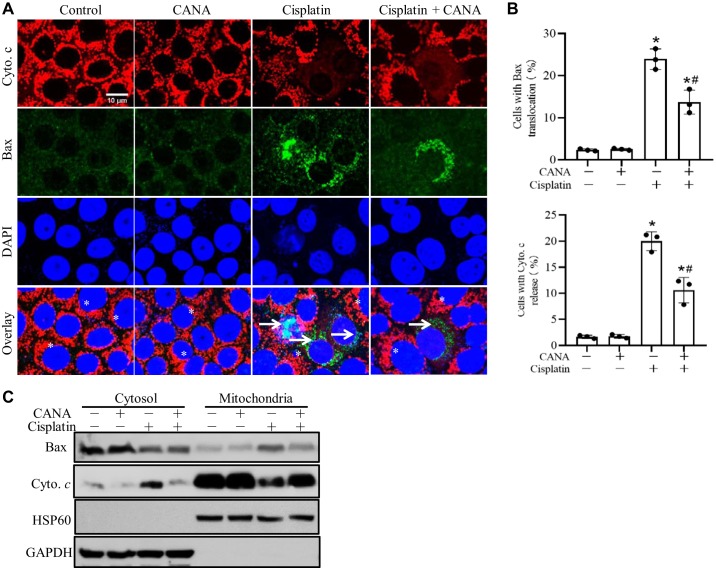Fig. 4.
Canagliflozin (CANA) suppresses Bax translocation and cytochrome c (Cyto c) release during cisplatin treatment of rat kidney proximal tubular cells (RPTCs). RPTCs were incubated with 20 μM cisplatin in the absence or presence of 15 μM CANA for 12 h. Cells were fixed for dual immunofluorescence of Cyto c and Bax or fractioned for cytosolic and mitochondria-enriched membrane parts for immunoblot analysis. A: dual immunofluorescence of Cyto c and active Bax. *Cells with Bax in the cytosol and Cyto c in mitochondria. Arrows indicate cells with Bax in mitochondria and Cyto c released into the cytosol. Scale bar = 10 μm. B: quantification of cells with Bax translocation and Cyto c release. Percentages of cells with Bax and Cyto c translocation were calculated in 250–300 cells from 8 randomly selected areas for each slide. *P < 0.05 vs. the control group; #P < 0.05 vs. the cisplatin-treated group without CANA. C: representative immunoblots to show Bax translocation to mitochondria and Cyto c release to the cytosol. GAPDH and heat shock protein (HSP)60 were used as internal protein loading controls for cytosolic and membrane fractions, respectively. Immunoblots are representative of 3 independent experiments.

